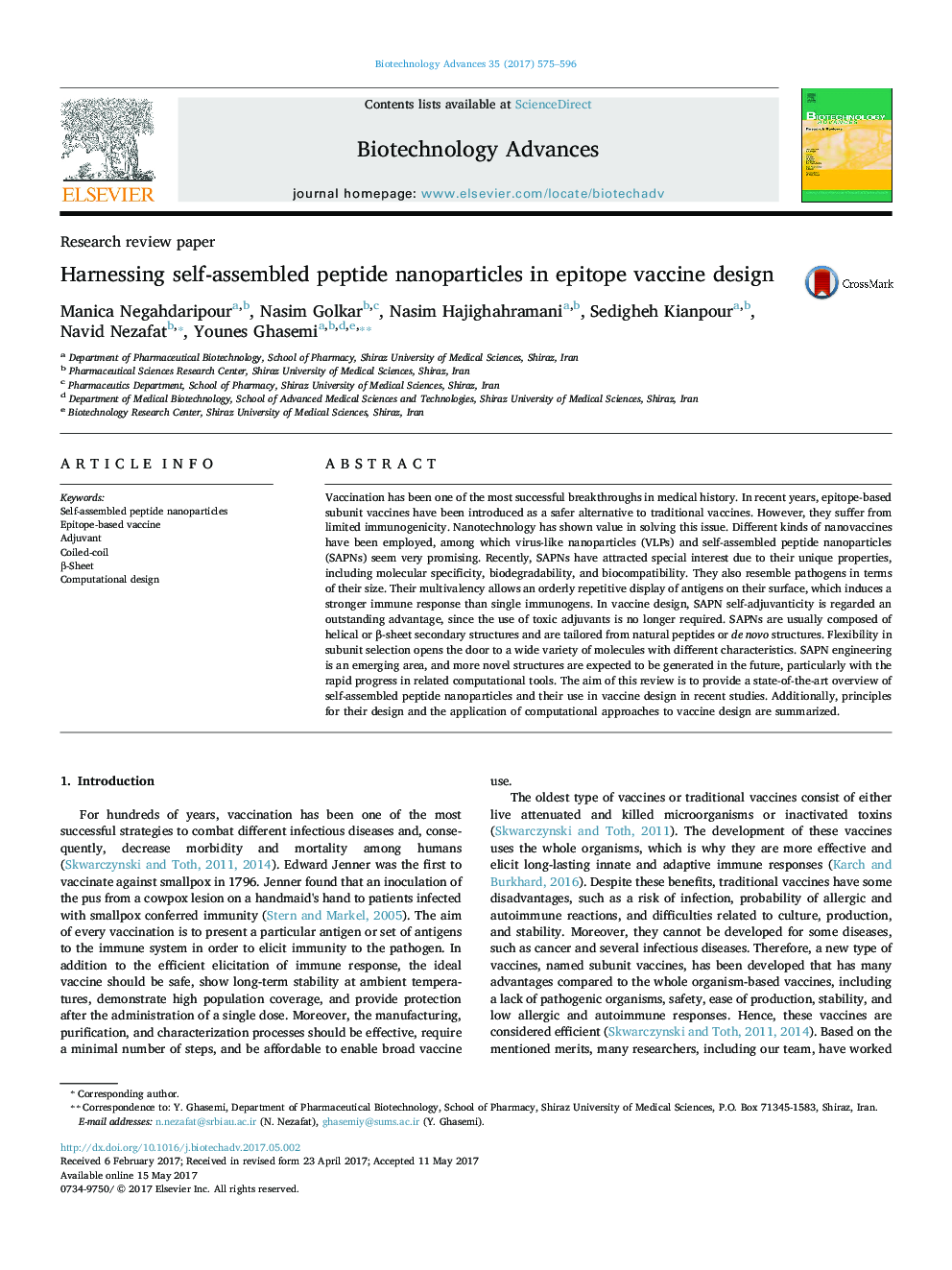| Article ID | Journal | Published Year | Pages | File Type |
|---|---|---|---|---|
| 6451176 | Biotechnology Advances | 2017 | 22 Pages |
Vaccination has been one of the most successful breakthroughs in medical history. In recent years, epitope-based subunit vaccines have been introduced as a safer alternative to traditional vaccines. However, they suffer from limited immunogenicity. Nanotechnology has shown value in solving this issue. Different kinds of nanovaccines have been employed, among which virus-like nanoparticles (VLPs) and self-assembled peptide nanoparticles (SAPNs) seem very promising. Recently, SAPNs have attracted special interest due to their unique properties, including molecular specificity, biodegradability, and biocompatibility. They also resemble pathogens in terms of their size. Their multivalency allows an orderly repetitive display of antigens on their surface, which induces a stronger immune response than single immunogens. In vaccine design, SAPN self-adjuvanticity is regarded an outstanding advantage, since the use of toxic adjuvants is no longer required. SAPNs are usually composed of helical or β-sheet secondary structures and are tailored from natural peptides or de novo structures. Flexibility in subunit selection opens the door to a wide variety of molecules with different characteristics. SAPN engineering is an emerging area, and more novel structures are expected to be generated in the future, particularly with the rapid progress in related computational tools. The aim of this review is to provide a state-of-the-art overview of self-assembled peptide nanoparticles and their use in vaccine design in recent studies. Additionally, principles for their design and the application of computational approaches to vaccine design are summarized.
